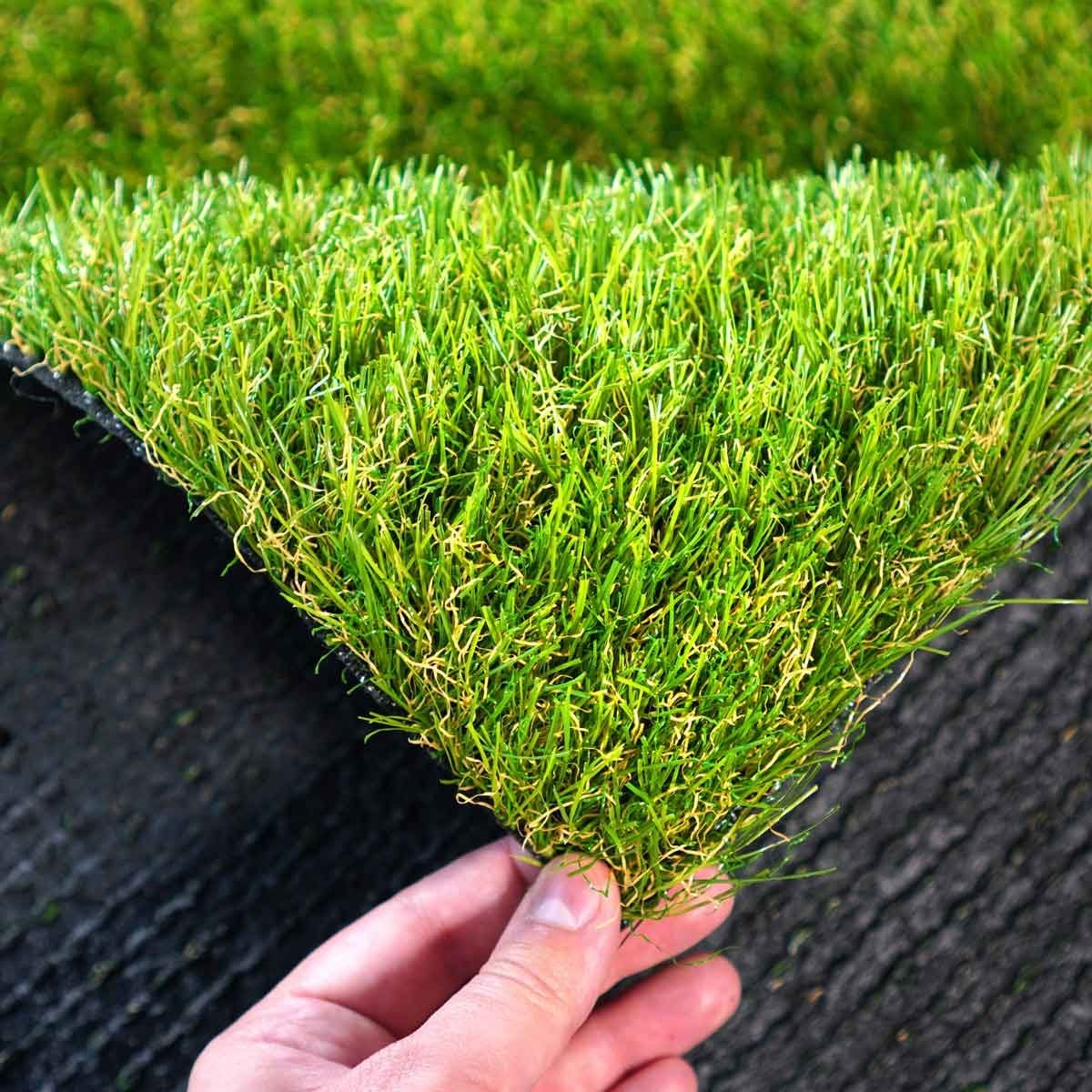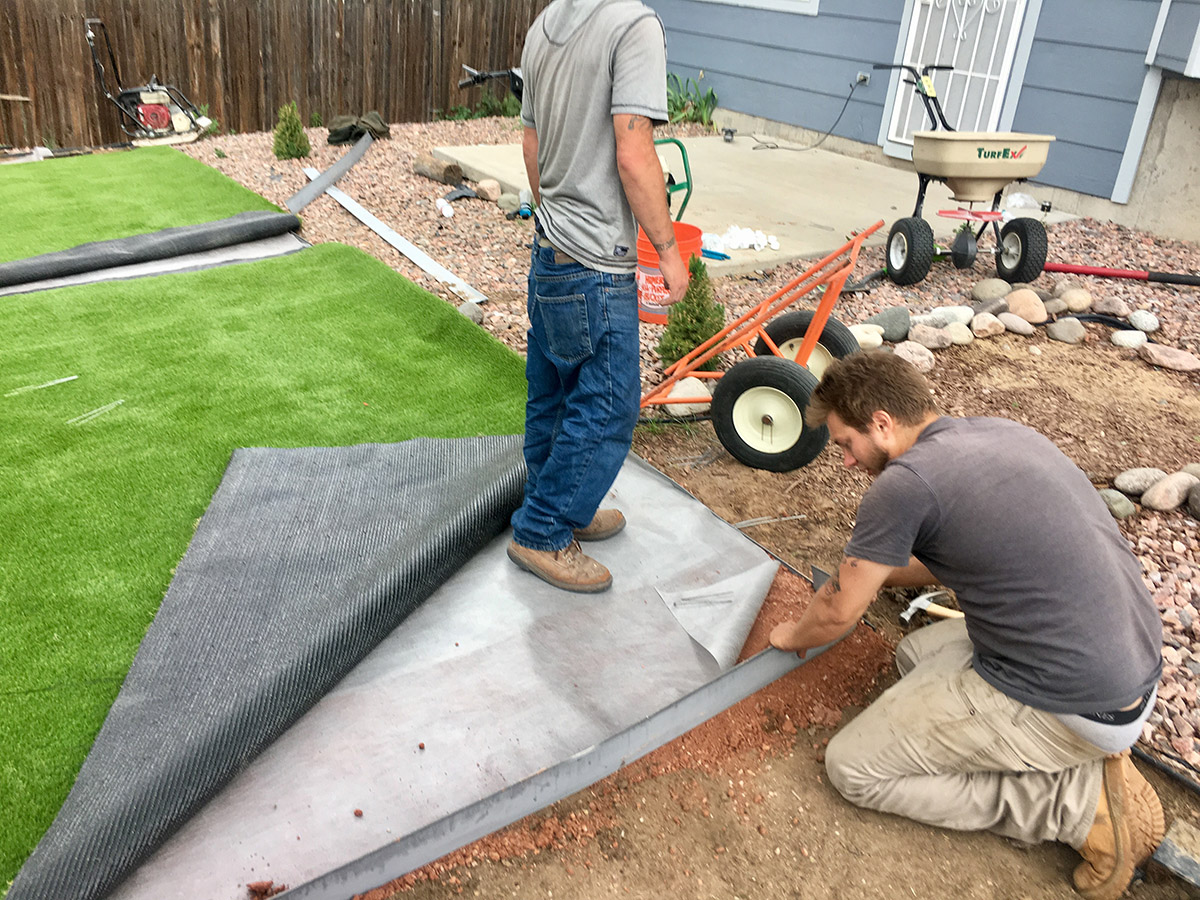Weather-Resistant Arizona Artificial Turf for Residential and Commercial Applications
Wiki Article
Look Into the Environmental Conveniences of Opting for Artificial Grass Solutions
The adoption of synthetic turf services presents an engaging opportunity to deal with pressing ecological difficulties. By substantially reducing water use and decreasing the application of dangerous chemicals, these options not only promote sustainable landscaping yet also protect regional ecosystems.Water Conservation Perks
One of the most significant benefits of fabricated turf is its capability to save water. In comparison, synthetic turf does not need watering, significantly decreasing the overall demand for water resources.By removing the need for routine watering, man-made lawn adds to sustainable landscape methods and helps mitigate the environmental influence of extreme water usage. The conservation of water prolongs to the reduction of runoff, which can lead to soil erosion and waterway contamination.
Furthermore, the installment of man-made grass permits home owners and towns to allot water resources extra effectively, concentrating on necessary uses such as drinking water and agriculture. The change towards artificial turf not only promotes liable water usage however likewise straightens with wider environmental objectives intended at preserving all-natural resources.
As areas increasingly focus on sustainability, the water conservation advantages of synthetic grass provide an engaging instance for its adoption in commercial and residential landscape design projects.
Lowered Chemical Use
The transition to artificial grass dramatically reduces the dependence on chemical treatments frequently made use of in natural turf maintenance. Standard grass management normally involves the application of chemicals, herbicides, and plant foods to promote growth and control parasites. These chemicals can pose dangers to human health, local wildlife, and the atmosphere, adding to soil and water contamination.In comparison, synthetic grass eliminates the requirement for these damaging substances. Once set up, it calls for minimal upkeep, largely including normal cleansing and seldom infill replenishment. This decrease in chemical use not just profits the prompt environment but additionally contributes to more comprehensive eco-friendly stability. By reducing the release of artificial compounds right into the community, synthetic grass advertises much healthier soil and water systems.
Furthermore, the lack of chemical overflow connected with synthetic grass setups assists protect local waterways from pollution, supporting marine life and preserving biodiversity. Arizona artificial turf. As areas progressively focus on sustainable methods, going with synthetic grass offers a practical option that straightens with ecological conservation objectives. Via this change, property owners can delight in lavish environment-friendly spaces without jeopardizing environmental wellness, leading the way for a much more sustainable future
Lower Carbon Impact

In addition, the installment of man-made turf can cause significant water conservation. Natural lawns need substantial quantities of water for irrigation, which not only adds to the carbon footprint linked with water extraction and treatment yet likewise pressures local water resources. On the other hand, synthetic grass needs very little upkeep, needing no watering, consequently substantially reducing water usage and its associated energy prices.
Additionally, the durability of fabricated turf adds to its lower carbon influence. With a life-span of approximately 15 years or more, the need for frequent replacements is decreased, causing less waste and lower power intake in production and getting rid of standard grass choices. Overall, synthetic grass provides a lasting option for eco conscious landscaping.
Habitat Preservation
Environment preservation is an essential factor to consider in the discussion over landscape design options, particularly when contrasting synthetic grass to natural lawn. Natural turf lawns frequently call for comprehensive upkeep, including the usage of herbicides, pesticides, and plant foods, which can adversely influence regional ecological communities. These chemicals can leach into the dirt and waterways, damaging indigenous vegetation and fauna and disrupting regional environments.
Fabricated lawn eliminates the demand for dangerous chemicals, therefore shielding neighboring wildlife and maintaining the stability of bordering communities. The setup of fabricated lawn can lead to the conversion of previous lawn locations into more biodiverse landscapes, such as pollinator gardens or indigenous plant locations, discover this info here which can support local wildlife.
Inevitably, the change to synthetic grass not just saves water and decreases maintenance initiatives yet also promotes a much more harmonious relationship in between human tasks and the native environment, promoting environment conservation at the same time.
Long-Term Sustainability
Lasting sustainability is an essential element in examining the advantages of artificial lawn over standard yard yards. One of one of the most substantial benefits of synthetic lawn is its durability; it can last approximately 15-20 years with very little maintenance, whereas natural lawn needs constant reseeding and replacement. This longevity lowers the requirement for consistent resources, such as water, fertilizers, and chemicals, which navigate here are important for keeping a healthy grass yard.Additionally, fabricated grass adds to a decrease in carbon discharges related to yard treatment devices. Traditional yards often need gas-powered lawn mowers, trimmers, and blowers, every one of which add to air pollution. Arizona turf. On the other hand, fabricated turf gets rid of the demand for such devices, advertising a cleaner setting
Moreover, the production of artificial lawn increasingly uses recycled materials, boosting its sustainability profile. As makers adopt green practices, the environmental footprint of synthetic grass remains to decrease.

Final Thought
The fostering of fabricated grass options offers substantial ecological advantages, including substantial water preservation, reduced dependence on unsafe chemicals, and a reduced carbon impact. Artificial lawn help in protecting all-natural environments by lessening land disturbance and advertising lasting sustainability via the use of long lasting products. Collectively, these aspects highlight the capacity of synthetic lawn to contribute positively to environmental health and supply a sensible option to traditional landscaping practices in an increasingly resource-conscious globe.In contrast, artificial turf does not require watering, substantially decreasing the overall need for water resources. By minimizing the launch of artificial compounds right into the ecological community, synthetic lawn promotes much healthier dirt and water systems.
Additionally, the installment of synthetic lawn can result in substantial water preservation. In contrast, fabricated turf requires minimal upkeep, requiring no watering, consequently considerably lowering water usage and its linked energy expenses.

Report this wiki page